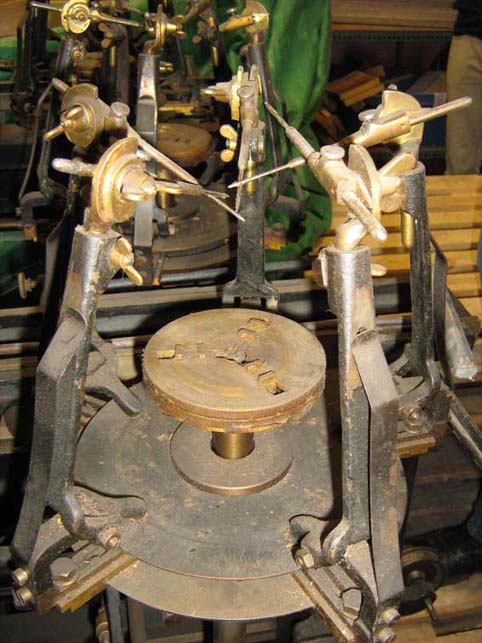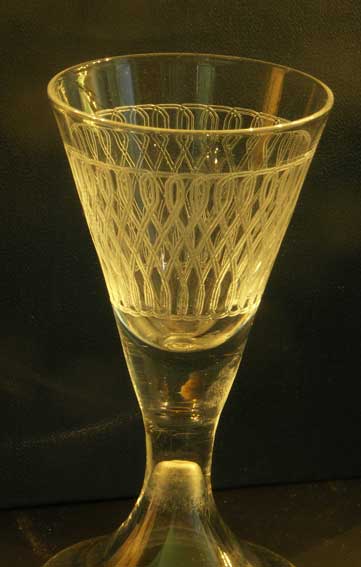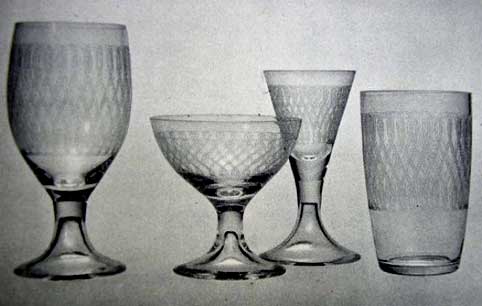
| VISIT US |
Bergdala glastekniska museum
|
|

|
||
|
För andra språk erbjuder vi/ for other languages we offer
- Acid etching
- (Sand) Blasting - Decals for decoration |
|
— — This is an outdated page, click here for the updated page — —Guilloché or pantographed - are there pattern differences?Both machines have the same scope: to draw a pattern in a very thin wax coating on a (round) glass. The glass is then submerged in a bath of hydrofluoric acid (HF), sometimes combined with sulphuric acid (H2SO4). Where the glass is exposed to the acid(s), they will eat into the surface, and the pattern appears. |
|
|
Like all other machines, guilloché machines come in different models. The one in the picture, like
the two machines we own, can only handle one glass at a time. The machines were of different
complexity, and could come with several accessories.
The picture below left shows details of two different patterns. For the left glass, "Joel" from Kosta, was used one needle for the top pattern but three needles for the next. On the right glass there were nine needle in operation for the meander pattern. Below right shows a detail from a pattern book manufactured by the German firm Kutzscher (from which one of our machines comes). It shows which wheels are to be mounted where to achieve the pattern pictured. In the museum we show several examples of guilloché-patterned glasses. |

|
||

|

|
||
|
We have found a web site showing both patterns and drawings of different guilloché machines (some of which can handle up to 6 pieces at one time). Here it is - one has to click each page. There are pattern drawings, also drawings of various accessories and drawings of some of the machines available. We think one of our machines is the one pictured on page 36.
The pantograph: its first advantage is its capacity to handle many pieces at the same time -
one of ours can take 24 glasses,
the other
can take 12.
At the start position the needles are not in contact with the glasses. There is a foot pedal that needs to be pressed to get the needles "operational". This means that pantographed patterns can have "loose ends"/lines that stop. |
|||

|

|
||
|
It is, of course, perfectly possible to "imitate" guilloché patterns with the help of a pantograph.
When we first saw the glass to the right, all of us were convinced we were seeing a typical guilloché-patterned glass.
So we were very surprised to find a template with this same pattern...
|

|
||

|
|||